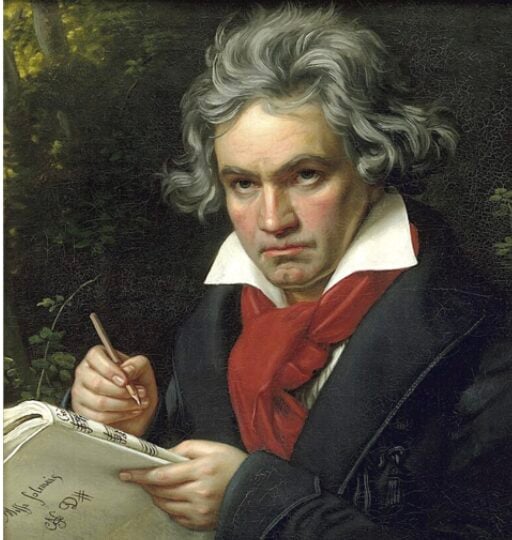At the wise age of 11, I already knew enough about major-league baseball to matter-of-factly predict that the Cleveland Indians would easily defeat the New York Giants in the 1954 World Series.
The Indians had interrupted the New York Yankees’ dynasty in the American League, much to the delight of baseball fans everywhere, and they did it with a vengeance, winning 111 times in a 154-game schedule.
They had what still remains one of the deepest and most talented pitching staffs ever assembled. The aces were Bob Lemon, Mike Garcia, and Early Wynn.

Bob Feller and Hal Newhouser were near the end of their Hall of Fame careers. The bullpen didn’t have a “closer,” as we know it today, but Art Houtteman, Ray Narleski, and Don Mossi were excellent relievers.
The ’54 Indians were a wonderfully diverse team. Their starting lineup included a Jewish (third-baseman Al Rosen), a Hispanic (second-baseman Bobby Avila) and two African-Americans (center fielder Larry Doby and rookie left fielder Al Smith).
I liked their white home uniforms with “Indians” written in script across the chest. I especially liked “Chief Wahoo,” their mascot and logo to this day. Back then, you see, political correctness hadn’t been invented and it never dawned on anybody that “Indians” or “Braves” might be an offensive nickname.
It was here that I got my first lesson in how unpredictable the sports world can be.
The Giants swept the Indians, four games to none.
The opening game more or less shocked the Indians (or “Tribe” as they are still known). Cleveland first-baseman Vic Wertz smashed a ball to the deepest part of the old Polo Grounds in New York. In any other park in baseball, it would have been a home run.
But, amazingly, here came Willie Mays, the Giants’ brilliant young center fielder, running at full speed with his back to the plate, spearing the ball at the last moment and then, hat flying off, whirling to throw the ball to the infield to keep the runners from advancing.
Here’s how Jack Brickhouse described it on NBC:
“There’s a long drive way back in center field…way back, back! It is…oh, what a catch by Mays! The runner on second, Doby was able to go to third. Willie Mays just brought this crowd to its feet…what a catch…it must have seemed like an optical illusion to a lot of people. Boy!”
I saw that catch live on a black-and-white television. It is the most famous defensive play in baseball history, and still amazes me whenever I see a replay. Thank heaven in happened in the TV age, or else we never would have really understood how remarkable it was.
The game was won when Giants’ pinch-hitter Dusty Rhodes blooped a walk-off home run that barely made it into the seats. New York manager Leo Durocher described it as a “Chinese” home run. See above about political correctness.
The Indians never recovered from “The Catch” and the Rhodes homer. It was almost as if they were in shock. They couldn’t touch Johnny Antonelli, the Giants’ left-handed ace, and Rhodes came off the bench for a couple more game-turning hits.
The Indians didn’t make the World Series again until 1995, a draught of 41 years, and they lost again, this time to the Atlanta Braves. All told, the Indians have won the Series twice – 1920 over the Brooklyn Dodgers and 1948 over the Boston Braves.
Nevertheless, even though they haven’t won the Series for 68 years, the Indians are surpassed in the futility department by the Chicago Cubs, who haven’t won the championship since 1908 or appeared in it since 1945.
Like most baseball fans, I’d like to see the Cubs join the Indians in this year’s World Series. A lot of sentiment and nostalgia would be involved. The fans on both sides would be able to talk about how nobody knows the misery they’ve seen.
Whether the Indians play the Cubs or Dodgers, however, I’m going to pull for Cleveland. I figure they’ve owed me one since 1954.
I also figure there’s some serious karma going on in the city once known as “The Mistake on the Lake,” what with the Indians’ run coming on the heels of the NBA title won by Lebron James and the Cavaliers.
The Indians don’t have a megastar in their starting lineup, but they have four players who hit .296 or better (left fielder Brandon Guyer, third-baseman Jose Ramirez, shortstop Francison Lindor, and center fielder Tyler Naquin), five who drove in at least 76 runs (first-baseman Mike Napoli, designated hitter Carlos Santana, second baseman Jason Kipris, Lindor, and Ramirez), and three who hit at least 23 homers (Santana, Napoli, and Kipris).
Their pitching staff hardly revives memories of the 1954 team, but they have a competent starting rotation led by Corey Kluber (18-9) and a dependable closer in Cody Allen, who recorded 32 saves in 35 chances.
They also appear to have the true grit of Bob Feller, who interrupted his brilliant career to serve four years in the U.S. Navy during World War II. The great hitter Ted Williams called him “the fastest and best pitcher I ever faced.”
I once got to bat against Feller. At the invitation of A. Ray Smith, he was in Louisville to appear in a celebrity softball exhibition before a Louisville Redbirds’ game in old Cardinal Stadium at the Fairgrounds.
I think I weakly grounded out against the man who was the ace of Cleveland’s 1948 championship team and a 13-game winner on the ill-fated 1954 squad.
It was a huge thrill for a guy who grew up in the 1950s collecting baseball cards, almost memorizing The Sporting News every week, and practically sleeping with his Ted Williams model Louisville Slugger.
So go, Indians. Win one for Feller. Win one for Larry Doby, who integrated the American League in ’48. Heck, win one for Chief Wahoo. He never meant to offend anybody – just look at that smile! – and I hope the politically correct crowd takes it easy on him.
Billy Reed is a member of the U.S. Basketball Writers Hall of Fame, the Kentucky Journalism Hall of Fame, the Kentucky Athletic Hall of Fame and the Transylvania University Hall of Fame. He has been named Kentucky Sports Writer of the Year eight times and has won the Eclipse Award twice. Reed has written about a multitude of sports events for over four decades, but he is perhaps one of media’s most knowledgeable writers on the Kentucky Derby






















